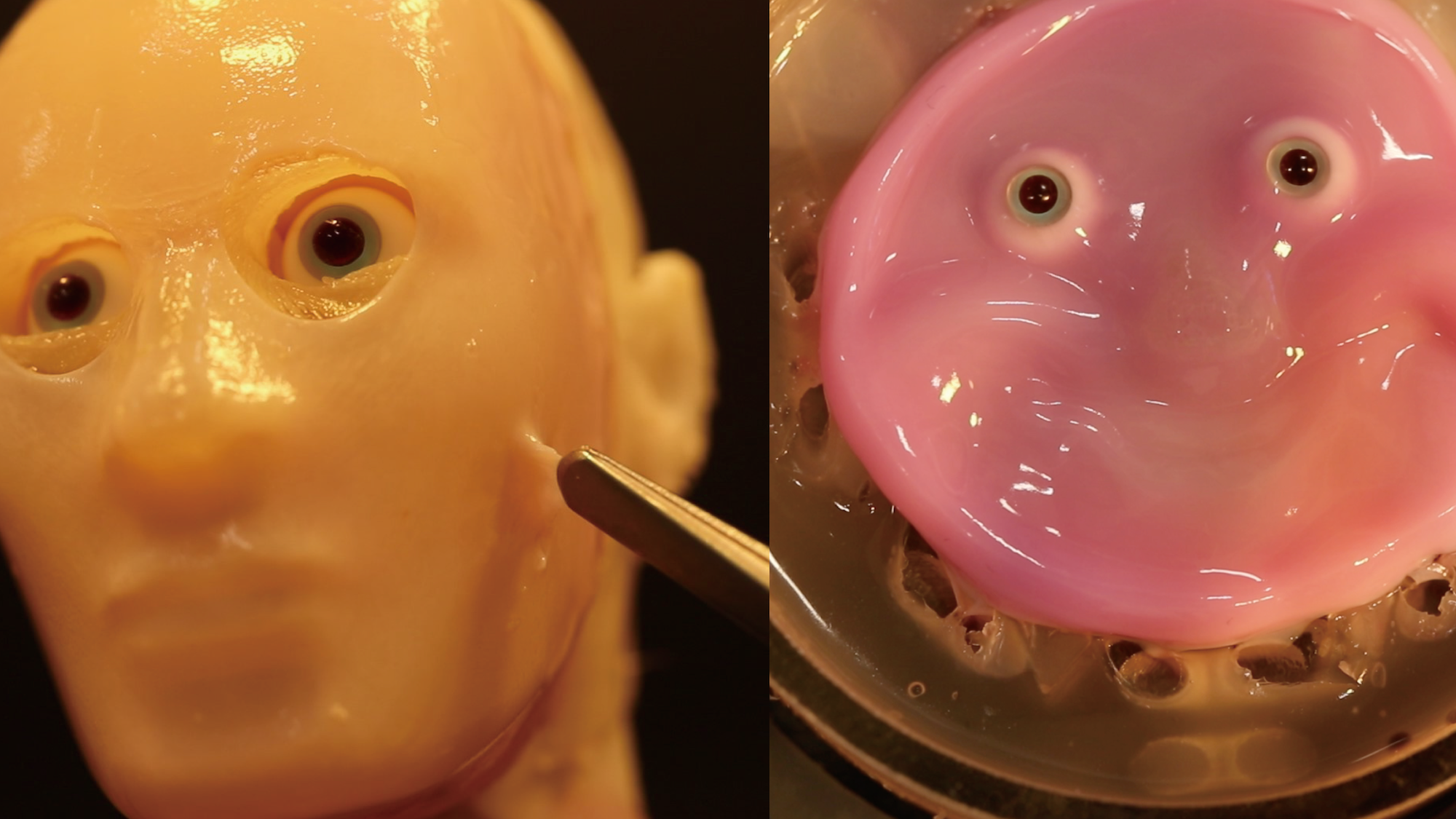

Even after sizable industry advances, humanoid robots remain firmly within the uncanny valley. And although a Japanese team’s new lab-engineered skin may not lessen a bot’s creepiness, it may one day become a helpful medical tool for cosmetic surgery and other medical procedures.
As detailed in a study published on June 25 in Cell Reports Physical Science, engineers at the University of Tokyo have developed a method to adhere bioengineered skin grown from human cells onto any surface shape. Existing approaches often rely on miniature anchors and hooks to attach similar tissues to surfaces, which limit their utility and make them easily susceptible to damage during movement.
In this case, however, researchers created miniature V-shaped perforations in their lab-grown skin to make it extremely flexible, then applied a collagen gel. While the gel’s viscosity normally would prevent it from seeping into the tiny incisions, the engineers used what’s known as a water-vapor-based plasma treatment that is usually employed during plastic adhesion processes. This made the skin more hydrophilic, allowing the collagen to seep into the performations and bind the skin to its underlying surface much like ligaments.

“By mimicking human skin-ligament structures and by using specially made V-shaped perforations in solid materials, we found a way to bind skin to complex structures,” corresponding author and mechano-informatics professor Shoji Takeuichi said in a statement. “The natural flexibility of the skin and the strong method of adhesion mean the skin can move with the mechanical components of the robot without tearing or peeling away.”
But even with its improved stickiness, that slimy sheen is more than just a little gross—it’s potentially disastrous for the lab-engineered skin.
“Manipulating soft, wet biological tissues during the development process is much harder than people outside the field might think. For instance, if sterility is not maintained, bacteria can enter and the tissue will die,” Takeuichi continued. Now that they can successfully do so, however, “living skin can bring a range of new abilities to robots.”
[Related: Watch a robot hand only use its ‘skin’ to feel and grab objects.]
To demonstrate their novel technique, the team attached their living skin layers to a 3D facial model of a human, as well as a small, 2D “face” with robotic actuators. Not only did the skin effectively adhere to the rounded features of a human head, but it withstood manipulation using the actuators as they formed a rudimentary, smiling face.
By Takeuichi’s own admission, the slick skin only “managed to replicate human appearance to some extent,” but that’s not the main point of their team’s design. Likening their technique to creating an organ-on-a-chip, a future face-on-a-chip may offer new avenues for researching skin aging, plastic and reconstructive surgery, as well as cosmetics. If paired with embedded sensors, a new generation of robots could include better environmental awareness.
Moving forward, Takeuichi and his collaborators want to add the ability to develop surface wrinkles and a thicker epidermis to create a more human-like example. But if you think the lab-grown robot skin is off-putting enough on its own, it might be best to prepare yourself.
“We believe that creating a thicker and more realistic skin can be achieved by incorporating sweat glands, sebaceous glands, pores, blood vessels, fat and nerves,” said Takeuichi. Whether or not all that is something for a human or robot to smile about remains to be seen.